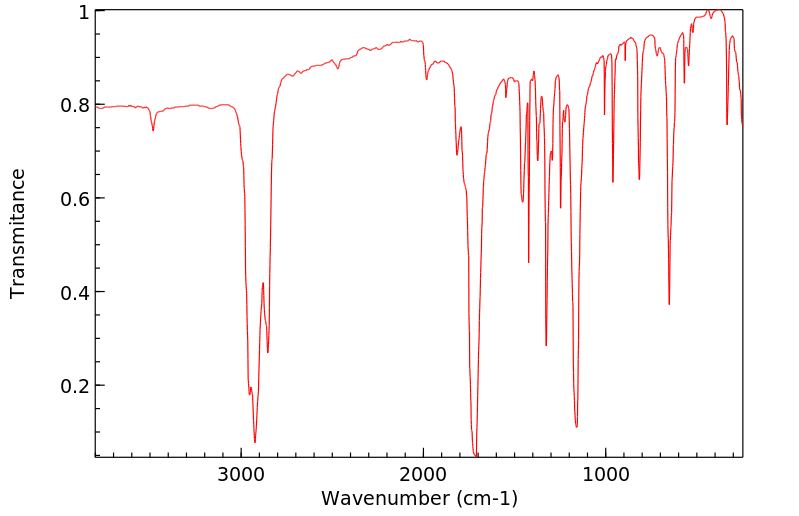N-氯代丁二酰亚胺 | 128-09-6
-
物化性质
-
计算性质
-
ADMET
-
安全信息
-
SDS
-
制备方法与用途
-
上下游信息
-
文献信息
-
表征谱图
-
同类化合物
-
相关功能分类
-
相关结构分类
物化性质
-
熔点:148-150 °C (lit.)
-
密度:1,65 g/cm3
-
闪点:>110°C
-
溶解度:14g/l
-
沸点:216.5°C
-
LogP:-1.19
-
颜色/状态:Orthorhombic crystals
-
气味:Slight chlorine odor
-
蒸汽压力:7.78X10-3 mm Hg at 25 deg C (est)
-
稳定性/保质期:
对湿气敏感,应保存在干燥器中。使用过程中,请避免吸入或让其粘在皮肤上,一般应在通风性能良好的通风橱中操作。
腐蚀性物质。吞咽有害,可能导致灼伤。如不慎接触眼睛,请立即用大量清水冲洗,并及时就医。建议佩戴合适的手套和防护眼镜或面罩。
-
分解:When heated to decomposition it emits toxic fumes of /chloride and nitrogen oxides/.
计算性质
-
辛醇/水分配系数(LogP):-0.2
-
重原子数:8
-
可旋转键数:0
-
环数:1.0
-
sp3杂化的碳原子比例:0.5
-
拓扑面积:37.4
-
氢给体数:0
-
氢受体数:2
ADMET
安全信息
-
TSCA:Yes
-
危险等级:8
-
危险品标志:C
-
安全说明:S26,S36/37/39,S37/39,S45
-
危险类别码:R22,R34
-
WGK Germany:3
-
海关编码:2933990090
-
危险品运输编号:UN 3261 8/PG 2
-
危险类别:8
-
RTECS号:UY1013500
-
包装等级:III
-
储存条件:存放在干燥的容器中。
SDS
模块 1. 化学品
产品名称: N-Chlorosuccinimide
修改号码: 5
模块 2. 危险性概述
GHS分类
物理性危害
金属腐蚀性 第1级
健康危害
急性毒性(经口) 第4级
皮肤腐蚀/刺激 1B类
严重损伤/刺激眼睛 第1级
环境危害 未分类
GHS标签元素
图标或危害标志
信号词 危险
危险描述 可能腐蚀金属
吞咽有害。
造成严重的皮肤灼伤和眼损伤
防范说明
[预防] 只可存放于原用的容器内。
切勿吸入。
使用本产品时切勿吃东西,喝水或吸烟。
处理后要彻底清洗双手。
穿戴防护手套/护目镜/防护面具。
[急救措施] 吸入:将受害者移到新鲜空气处,在呼吸舒适的地方保持休息。
食入:漱口。切勿催吐。
眼睛接触:用水小心清洗几分钟。如果方便,易操作,摘除隐形眼镜。继续冲洗。
皮肤接触:立即去除/脱掉所有被污染的衣物。用水清洗皮肤/淋浴。
被污染的衣物清洗后方可重新使用。
立即呼叫解毒中心/医生。
吸收溢出物,防止材料被损坏。
N-氯丁二酰亚胺 修改号码:5
模块 2. 危险性概述
[储存] 存放处须加锁。
[废弃处置] 根据当地政府规定把物品/容器交与工业废弃处理机构。
模块 3. 成分/组成信息
单一物质/混和物 单一物质
化学名(中文名): N-氯丁二酰亚胺
百分比: >98.0%(T)
CAS编码: 128-09-6
俗名: NCS
分子式: C4H4ClNO2
模块 4. 急救措施
吸入: 将受害者移到新鲜空气处,保持呼吸通畅,休息。立即呼叫解毒中心/医生。
皮肤接触: 立即去除/脱掉所有被污染的衣物。用大量肥皂和水轻轻洗。
立即呼叫解毒中心/医生。
眼睛接触: 用水小心清洗几分钟。如果方便,易操作,摘除隐形眼镜。继续清洗。
立即呼叫解毒中心/医生。
食入: 立即呼叫解毒中心/医生。漱口。切勿引吐。
紧急救助者的防护: 救援者需要穿戴个人防护用品,比如橡胶手套和气密性护目镜。
模块 5. 消防措施
合适的灭火剂: 干粉,泡沫,雾状水,二氧化碳
特殊危险性: 小心,燃烧或高温下可能分解产生毒烟。
特定方法: 从上风处灭火,根据周围环境选择合适的灭火方法。
非相关人员应该撤离至安全地方。
周围一旦着火:如果安全,移去可移动容器。
消防员的特殊防护用具: 灭火时,一定要穿戴个人防护用品。
模块 6. 泄漏应急处理
个人防护措施,防护用具, 使用特殊的个人防护用品(针对有毒颗粒的P3过滤式空气呼吸器)。远离溢出物/泄露
紧急措施: 处并处在上风处。
泄露区应该用安全带等圈起来,控制非相关人员进入。
环保措施: 防止进入下水道。
控制和清洗的方法和材料: 清扫收集粉尘,封入密闭容器。注意切勿分散。附着物或收集物应该立即根据合适的
法律法规处置。
模块 7. 操作处置与储存
处理
技术措施: 在通风良好处进行处理。穿戴合适的防护用具。防止粉尘扩散。处理后彻底清洗双手
和脸。
注意事项: 如果可能,使用封闭系统。如果粉尘或浮质产生,使用局部排气。
操作处置注意事项: 避免接触皮肤、眼睛和衣物。
使用耐腐蚀设备。
贮存
储存条件: 保持容器密闭。冷藏储存。
存放于惰性气体环境中。
防湿。
存放处须加锁。
远离不相容的材料比如氧化剂存放。
N-氯丁二酰亚胺 修改号码:5
模块 7. 操作处置与储存
热敏, 光敏, 潮敏
包装材料: 依据法律。只可存放在原用的容器內。
模块 8. 接触控制和个体防护
工程控制: 尽可能安装封闭体系或局部排风系统。同时安装淋浴器和洗眼器。
个人防护用品
呼吸系统防护: 防尘面具,自携式呼吸器(SCBA),供气呼吸器等。使用通过政府标准的呼吸器。依
据当地和政府法规。
手部防护: 防渗手套。
眼睛防护: 护目镜。如果情况需要,佩戴面具。
皮肤和身体防护: 防渗防护服。如果情况需要,穿戴防护靴。
模块 9. 理化特性
固体
外形(20°C):
外观: 晶体-粉末
颜色: 白色类白色
气味: 氯味
pH: 无数据资料
熔点:
148°C
沸点/沸程 无资料
闪点: 无资料
爆炸特性
爆炸下限: 无资料
爆炸上限: 无资料
密度: 无资料
溶解度:
[水] 微溶于(14g/L, 25°C)
[其他溶剂]
溶于: 丙酮, 乙酸
微溶于: 苯
极微溶于: 醚, 氯仿, 四氯化碳
模块 10. 稳定性和反应性
化学稳定性: 一般情况下稳定。
危险反应的可能性: 未报道特殊反应性。
须避免接触的物质 强酸, 强碱, 还原剂, 可燃物, 胺类
危险的分解产物: 一氧化碳, 二氧化碳, 氮氧化物 (NOx), 氯化氢, 氯
模块 11. 毒理学信息
急性毒性: orl-rat LDLo:1 g/kg
对皮肤腐蚀或刺激: 无资料
对眼睛严重损害或刺激: 无资料
生殖细胞变异原性: 无资料
致癌性: scu-mus TDLo:840 mg/kg/70W-I
IARC = 无资料
NTP = 无资料
生殖毒性: 无资料
RTECS 号码: UY1013500
N-氯丁二酰亚胺 修改号码:5
模块 12. 生态学信息
生态毒性:
鱼类: 无资料
甲壳类: 无资料
藻类: 无资料
残留性 / 降解性: 无资料
潜在生物累积 (BCF): 无资料
土壤中移动性
log水分配系数: 无资料
土壤吸收系数 (Koc): 无资料
亨利定律 无资料
constaNT(PaM3/mol):
模块 13. 废弃处置
如果可能,回收处理。请咨询当地管理部门和专家。如果与可燃性溶剂混和可能着火。废弃处置时请遵守国家、地
区和当地的所有法规。
模块 14. 运输信息
联合国分类: 第8类 腐蚀品
UN编号: 3261
正式运输名称: 腐蚀性固体, 酸性的, 有机的, 不另作详细说明
包装等级: II
模块 15. 法规信息
《危险化学品安全管理条例》(2002年1月26日国务院发布,2011年2月16日修订): 针对危险化学品的安全使用、
生产、储存、运输、装卸等方面均作了相应的规定。
模块16 - 其他信息
N/A
制备方法与用途
N-氯代丁二酰亚胺,又名琥珀酰基氯亚胺,是一种重要的医药中间体。它可用于抗菌素的生产、鉴别伯仲叔醇的试剂以及作为氯化剂和杀菌剂。此外,在有机合成中,N-氮代丁二酸亚胺也是一种重要且方便的氮化剂及杀菌剂,易于提纯且较为稳定。
物理化学性质N-氯代丁二酰亚胺为白色粉末或晶体,熔点范围144~146°C。它溶于水,微溶于四氯化碳、苯、甲苯和乙酸,并不溶于醚类。
应用在有机合成中,NCS(N-氯代丁二酰亚胺)是一种重要的氯化剂,专一地取代脂肪酰氯的α-H,制得高纯度的α-氯代脂肪酸及其衍生物。这些产物是精细化学品和医药品的重要原料,如强力霉素、甲烯土霉素、炔诺酮、16-次甲基地孕酮、氯芪酚胺等。此外,NCS也可作为农药和香料的关键原材料,并用作聚酯纤维的表面处理剂,增强其对染色粘合剂及印刷油墨的接受能力。
合成方法具体步骤包括将丁二酸加入反应锅中,滴加氨水搅拌并加热,在102°C蒸去水分。然后真空蒸馏收集180℃以上的馏分得到丁二酰亚胺。接着将熔化的丁二酰亚胺加至乙酸水中,冷却至0-5°C后滴加次氯酸钠,在8°C以下反应控制爆炸危险。离心分离滤饼并用水洗至中性,甩干、干燥即得成品。
注意事项N-氯代丁二酰亚胺对湿气敏感,应保存在干燥器中,并避免吸入或粘附于皮肤上。操作时应在通风良好的通风橱内进行。
化学性质N-氯代丁二酰亚胺(NCS)是一种常用的亲电加成和亲电取代试剂,广泛用于硫化物、砜和酮的氯化及合成N-氯化胺。它对湿气敏感,应保存在干燥器中,并注意通风良好。
用途N-氯代丁二酰亚胺可用作医药中间体和有机合成中的重要氯化剂。此外,还用于抗菌素药物的生产、橡胶助剂的制备以及其它多种化合物的合成,如苄基头孢菌素(Cefaloram)等。
生产方法N-氯代丁二酰亚胺由丁二酸经氨化和氯化反应制得。具体步骤包括将丁二酸加入反应锅中,滴加氨水搅拌并加热,在102°C蒸去水分。然后真空蒸馏收集180℃以上的馏分得到丁二酰亚胺。最后将熔化的丁二酰亚胺加至乙酸水中,冷却后滴加次氯酸钠,并在8°C以下反应控制爆炸危险。离心分离滤饼并用水洗至中性,甩干、干燥即得成品。
上下游信息
反应信息
-
作为反应物:参考文献:名称:Improvements of C–H Radio-Iodination of N-Acylsulfonamides toward Implementation in Clinics摘要:描述了一种改进的C-H放射性碘化协议。这些新条件允许使用[125I]NIS和少量钯醋酸盐和对甲苯磺酸催化快速干净地形成放射性碘化N-酰基磺酰胺。不需要预功能化的前体,产物以27-84%的放射化学转化率(RCC)获得。DOI:10.1055/s-0037-1611884
-
作为产物:参考文献:名称:Betulin和Diacetylbetulin中的氢亲电取代摘要:可以被视为空间受阻的烯烃的桦木素和二乙酰基白蛋白与N-氯-,N-溴-和N-碘代琥珀酰亚胺反应,以定量的总收率得到烯丙基和乙烯基取代的产物。在ClDOI:10.1134/s107042801801013x
-
作为试剂:描述:4-氯吡咯并嘧啶 在 盐酸 、 N-氯代丁二酰亚胺 、 四(三苯基膦)钯 、 sodium carbonate 、 N,N-二异丙基乙胺 作用下, 以 四氢呋喃 、 1,4-二氧六环 、 N,N-二甲基甲酰胺 为溶剂, 反应 2.5h, 生成 4-(5-chloro-7H-pyrrolo[2,3-d]pyrimidin-4-yl)-N-(3-chlorophenyl)-3,6-dihydropyridine-1(2H)-carboxamide参考文献:名称:四氢吡啶 LIMK 抑制剂:结构活性研究和生物学表征摘要:LIM 激酶 LIMK1 和 LIMK2 已成为开发抑制剂的有前景的靶标,具有治疗多种主要疾病的潜在应用。 LIMK 作为 Rho-GTPase 家族小 G 蛋白的下游效应子,以及肌丝蛋白丝切蛋白(一种肌动蛋白解聚因子)的主要调节因子,在细胞骨架重塑中发挥着至关重要的作用。在本文中,我们描述了新型四氢吡啶吡咯并嘧啶 LIMK 抑制剂的概念、合成和生物学评价。首先构建同源模型是为了更好地理解我们初步化合物的结合模式并解释生物活性的差异。生成了包含 60 多种产品的库,并在中低纳摩尔范围内测量了酶活性。然后对最有前途的衍生物进行了肌动蛋白丝切蛋白磷酸化抑制的评估,从而鉴定出其在激酶选择性组中对 LIMKs 表现出优异的选择性。我们还证明它通过干扰肌动蛋白丝来影响细胞骨架。使用三种不同细胞系对该衍生物进行的细胞迁移研究显示出对细胞运动的显着影响。最终,解决了与LIMK2复合的激酶结构域的晶体结构DOI:10.1016/j.ejmech.2024.116391
文献信息
-
Regioselective C–H Thioarylation of Electron-Rich Arenes by Iron(III) Triflimide Catalysis作者:Amy C. Dodds、Andrew SutherlandDOI:10.1021/acs.joc.1c00448日期:2021.4.16iron(III) triflimide allowed the efficient thiolation of a range of arenes, including anisoles, phenols, acetanilides, and N-heterocycles. The method was applicable for the late-stage thiolation of tyrosine and tryptophan derivatives and was used as the key step for the synthesis of pharmaceutically relevant biaryl sulfur-containing compounds such as the antibiotic dapsone and the antidepressant vortioxetine
-
Thioimides: New Reagents for Effective Synthesis of Thiolesters from Carboxylic Acids作者:Adam Henke、Jiri SroglDOI:10.1021/jo801319x日期:2008.10.3carboxylic acids are used as the precursors for the convenient synthesis of thiolesters in the phosphine mediated process. Cyclic and acyclic thioimides show equal efficiency, furnishing the desired thiolesters in good to excellent yields. The general, highly efficient transformation tolerates various functional groups and the resulting thiolesters are obtained in high purity after a simple separation. The
-
AlCl<sub>3</sub> -Catalyzed Intermolecular Annulation of Thiol Derivatives and Alkynes by 1,2-Sulfur Migration: Construction of 6-Substituted Benzo[<i>b</i> ]thiophenes作者:E. Ramesh、Tirumaleswararao Guntreddi、Akhila K. SahooDOI:10.1002/ejoc.201700607日期:2017.8.17intermolecular oxidative annulation of N-arylthio phthalimide derivatives with alkynes is showcased at room temperature. The annulation involves oxidative cleavage of the SN bond and the occurrence of 1,2-S-migration, which eventually allows the construction of diverse arrays of -conjugated 6-substituted 2,3-diaryl benzo[b]thiophene derivatives.
-
Enantioselective Construction of Axially Chiral Amino Sulfide Vinyl Arenes by Chiral Sulfide‐Catalyzed Electrophilic Carbothiolation of Alkynes作者:Yaoyu Liang、Jieying Ji、Xiaoyan Zhang、Quanbin Jiang、Jie Luo、Xiaodan ZhaoDOI:10.1002/anie.201915470日期:2020.3.16The enantioselective construction of axially chiral compounds by electrophilic carbothiolation of alkynes is disclosed for the first time. This enantioselective transformation is enabled by the use of a Ts-protected bifunctional sulfide catalyst and Ms-protected ortho-alkynylaryl amines (Ts=tosyl; Ms=mesyl). Both electrophilic arylthiolating and electrophilic trifluoromethylthiolating reagents are
-
Catalytic Electrophilic Thiocarbocyclization of Allenes作者:Quanbin Jiang、Huimin Li、Xiaodan ZhaoDOI:10.1021/acs.orglett.1c03270日期:2021.11.19An efficient approach via catalytic electrophilic thiocarbocyclization of allenes to construct indene-based sulfides with excellent regioselectivities is disclosed. The reactions were carried out at low temperatures by selenide catalysis in the presence of TMSOTf. Not only electrophilic arylthio reagents but also electrophilic alkylthio reagents worked well under these conditions. Furthermore, the
表征谱图
-
氢谱1HNMR
-
质谱MS
-
碳谱13CNMR
-
红外IR
-
拉曼Raman
-
峰位数据
-
峰位匹配
-
表征信息











